The Two Faces of Hijrat Colony
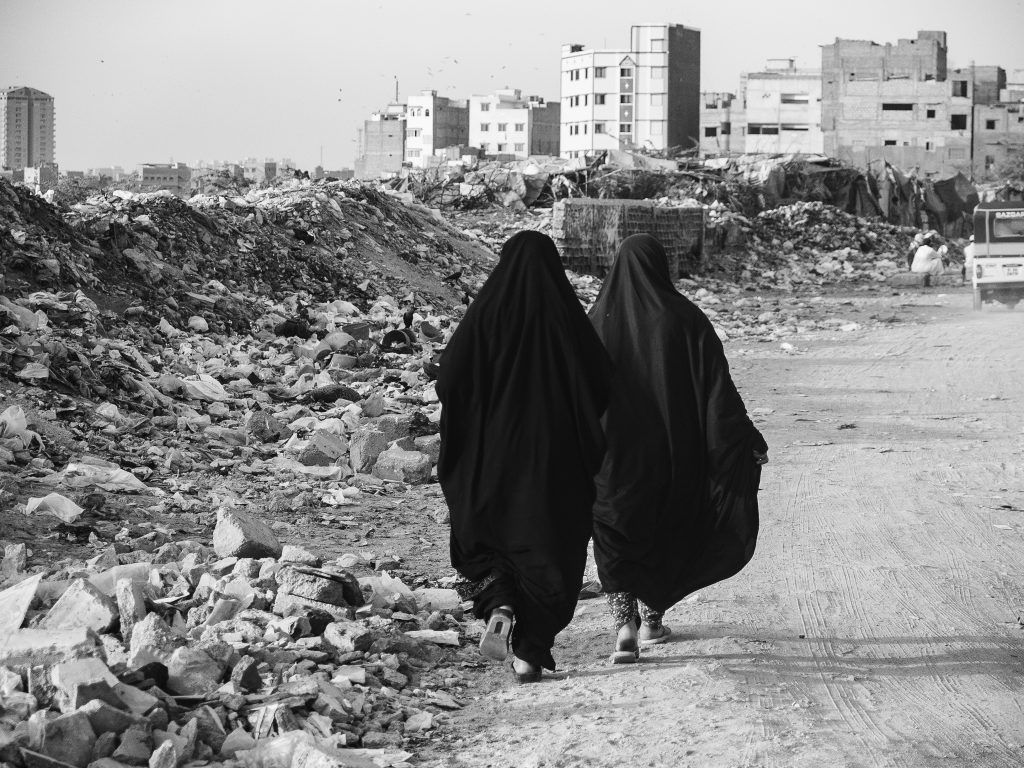
As you drive along Mai Kolachi bypass, a kilometer before the imposing boundary wall of the American Consulate, you would notice train tracks that cut across the road. If you turn left and follow the tracks you will end up in Shireen Jinnah Colony. If you turn right it will lead to an area called Hijrat Colony. Like most poor areas of Karachi, there is dust, dirt and garbage everywhere. There is hardly a road but some cars and many motor cycles and rickshaws are plying. Children are playing everywhere and women, mostly burka clad, are going about their daily lives.
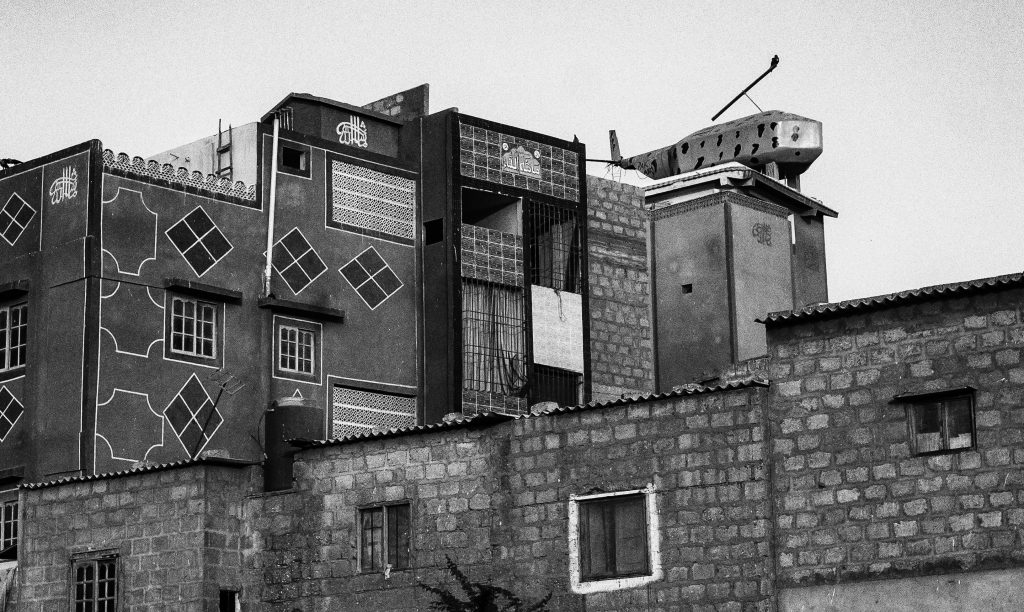
While this whole area is known as Hijrat colony, it consists of two very different parts. To the right of the tracks there are well stocked shops and residential buildings made of bricks. While the setting of the area is quite miserable, the housing part appears solidly lower middle class.
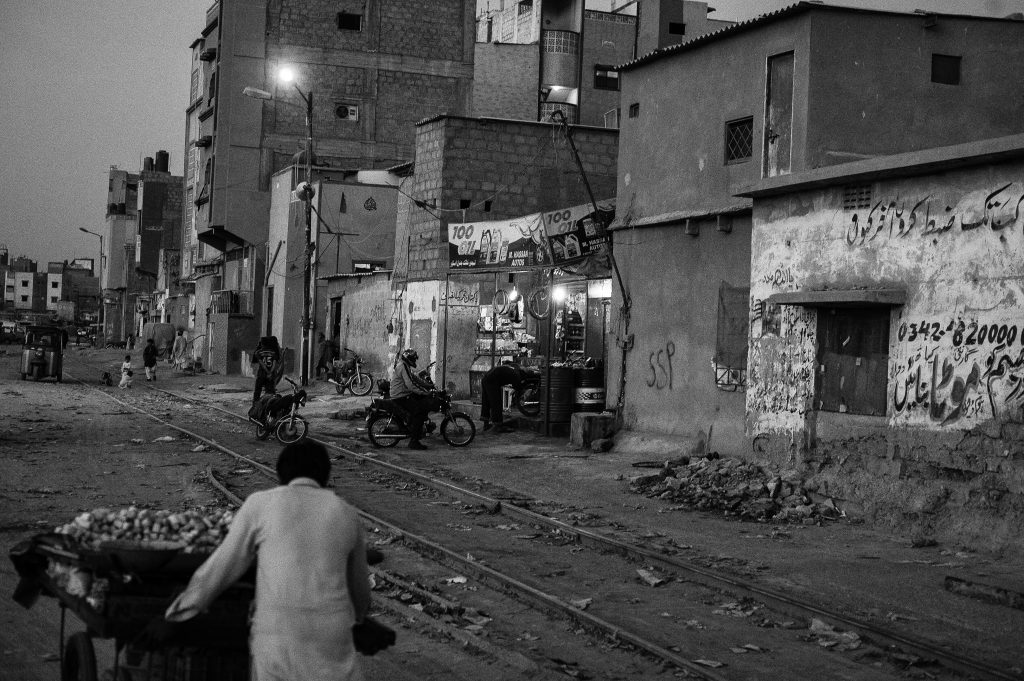
The area on the right is inhabited by people from Kohat. The mood in the area is clearly cheerful and people seem relaxed and healthy. The elders of the area were sitting in a large circle and chatting. “They come there every afternoon and leave just before the Maghrib prayers,” I was told. I talked to a group of men assembled outside a shop. They told me that they are all from the village Teri in Khyber Pukhtunkhwa district of Kohat so they never miss their home village. When I remarked that most buildings are well constructed they informed me, “Most people here built their houses over many years by borrowing small amounts of money monthly. Now these houses are worth many lakhs. We never have any problem of power as we share the grid with the IG of police who lives in Bath Island,” he added with a chuckle.
I asked how they feel about the much poorer people living in the shanties across the railway line and they said there is never any trouble and everyone lives in harmony. “We know every single person who lives in this area so there is no question of anyone making mischief and getting away with it.” They proudly mentioned that the area is so secure that when riots broke out after the assassination of Benazir Bhutto, people from other areas parked their cars in Hijrat Colony. They told me that whenever they see someone with a camera, they think he is from the Pakistan Railway as the tracks that run through the colony are part of the Circular Railway. I hastily assured them that I had nothing to do with the railway! The pukka houses are now worth a lot of money and one wonders about the quantum of compensation required if the Circular Railway is revived.
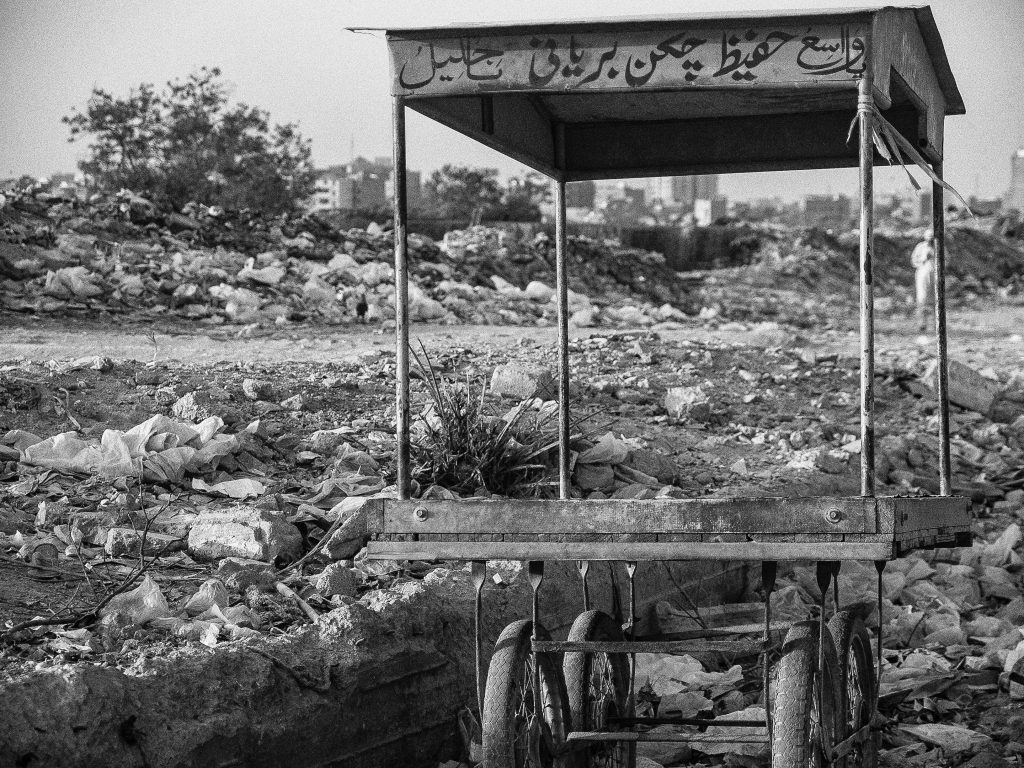
The part to the left side of the tracks is another story. It is a shanty town where dwellings consist of rags and plastic sheets supported by bamboo poles and tree branches. The whole area is surrounded by a garbage dump.
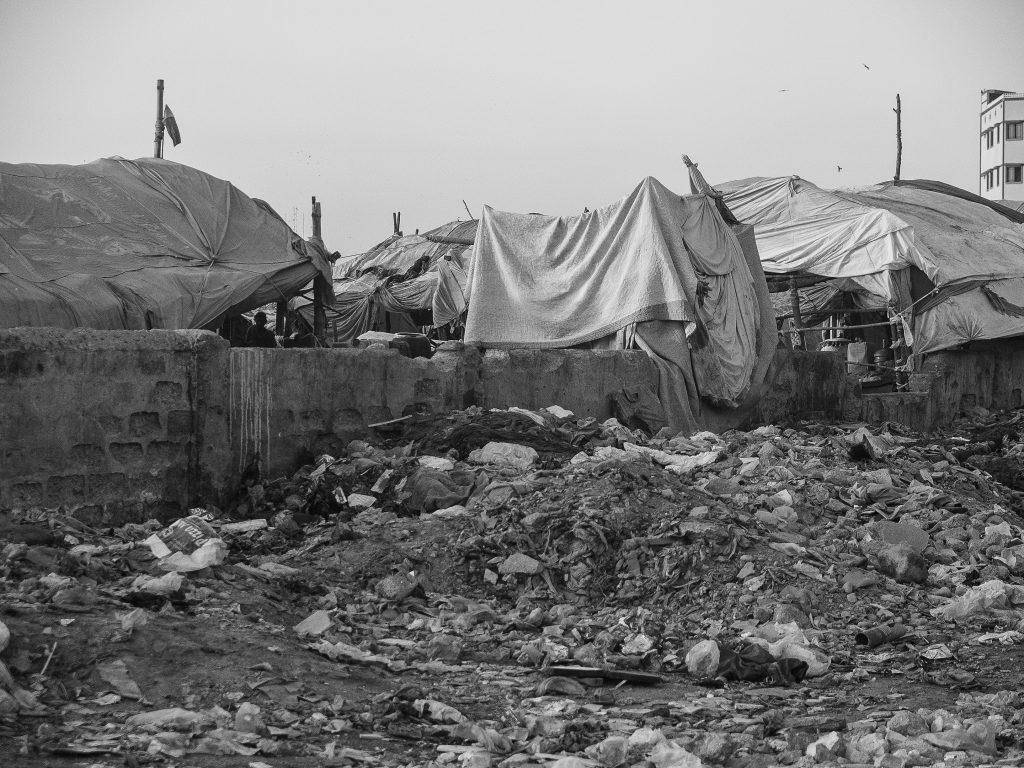
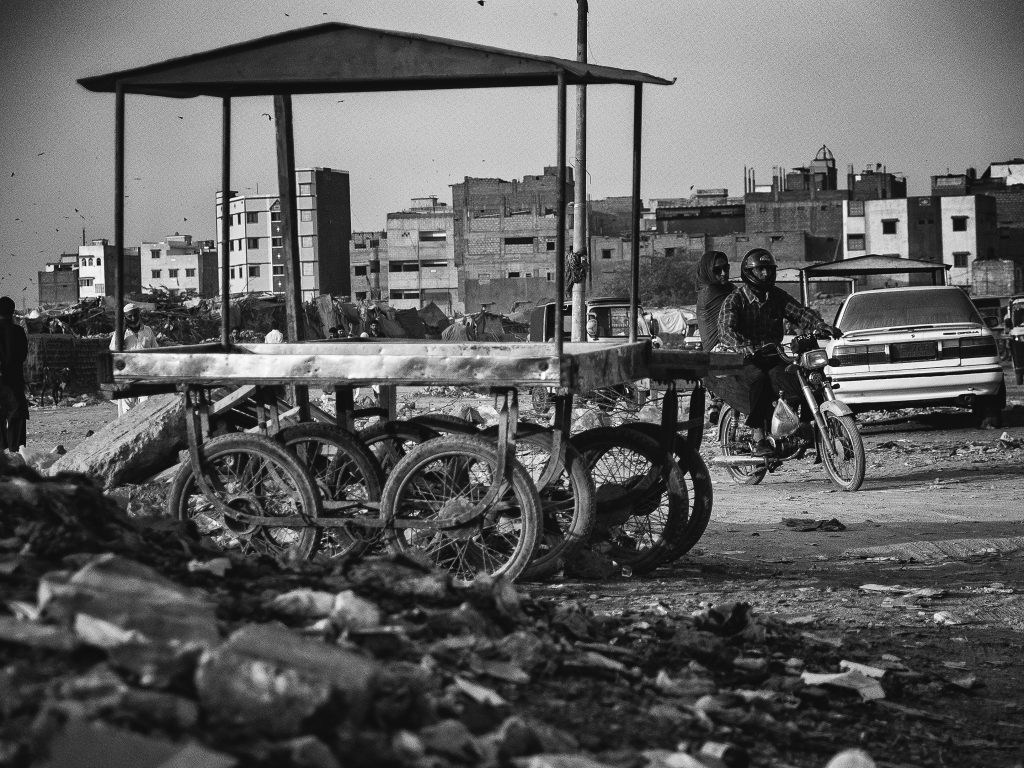
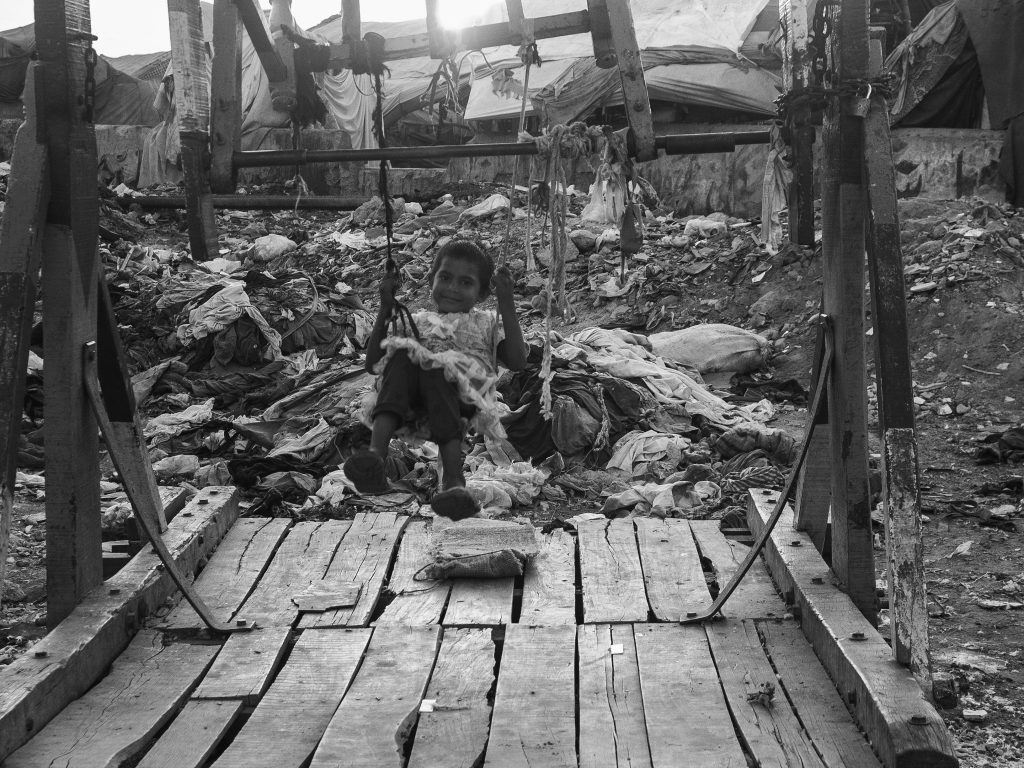
A met a young man dressed in ragged trousers and shirt. His face was drawn and his eyes seemed tired. He was friendly and perfectly happy to take me inside the shanty town to take pictures. “My name is Irfan. We belong to the Butt community of Punjab.” He told me that they moved here from Lahore three years ago. “Why did you leave Lahore?” I asked him. “We were living in the same conditions there and we were evicted by the city authorities.” He says he is afraid that the same fate will befall them here as well. He laughed when I suggested that making the municipal authorities aware of their plight by writing about it may improve matters. “There is no question of improvement. Actually, if some big shot reads about us he may want to remove this “eyesore” from here.”
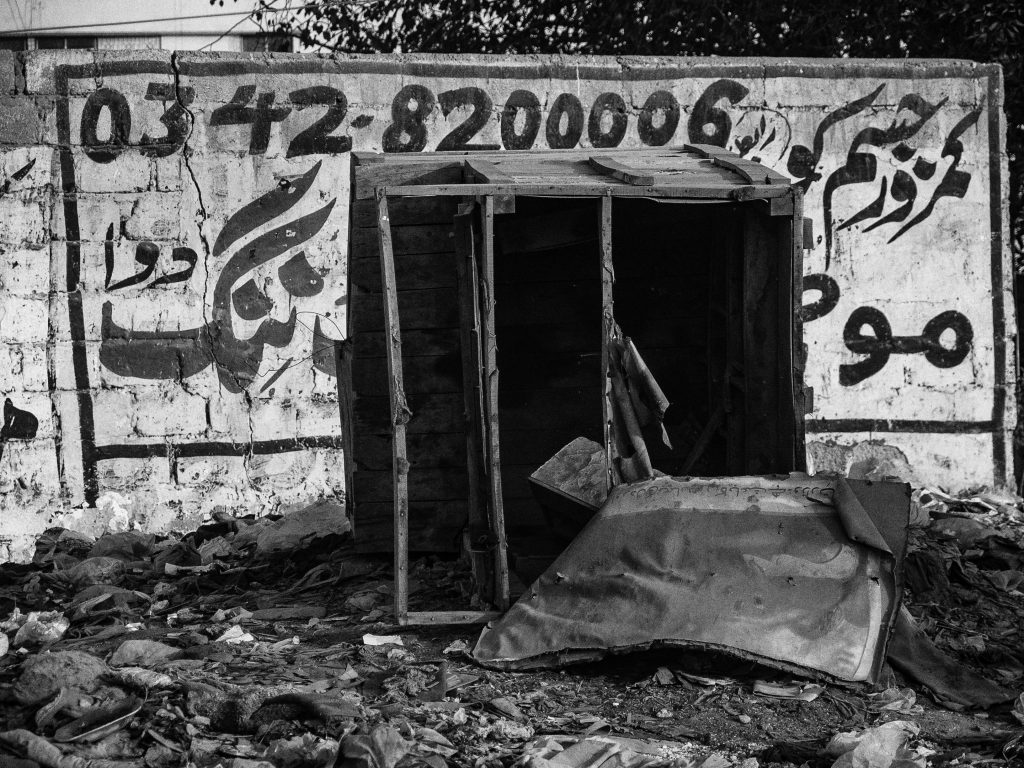
The shanty town consists of a few shops with minimal supplies. The sleeping areas are concrete blocks covered with quilts. Some little children were running around and crawling naked in the dirt. The source of water and washing was a swampy pond full of garbage and covered with mosquitoes and flies. “We sell junk on a pushcart. We make Rs. 100 to 150 a day with which we support the whole family.” He told me his parents were dead and he was looking after his paralyzed and mentally ill sister. He took me to his sister who seemed like a teenager. She was dressed in rags and was sitting motionless, gazing fixedly at some distant object. My finger refused to press the camera shutter.
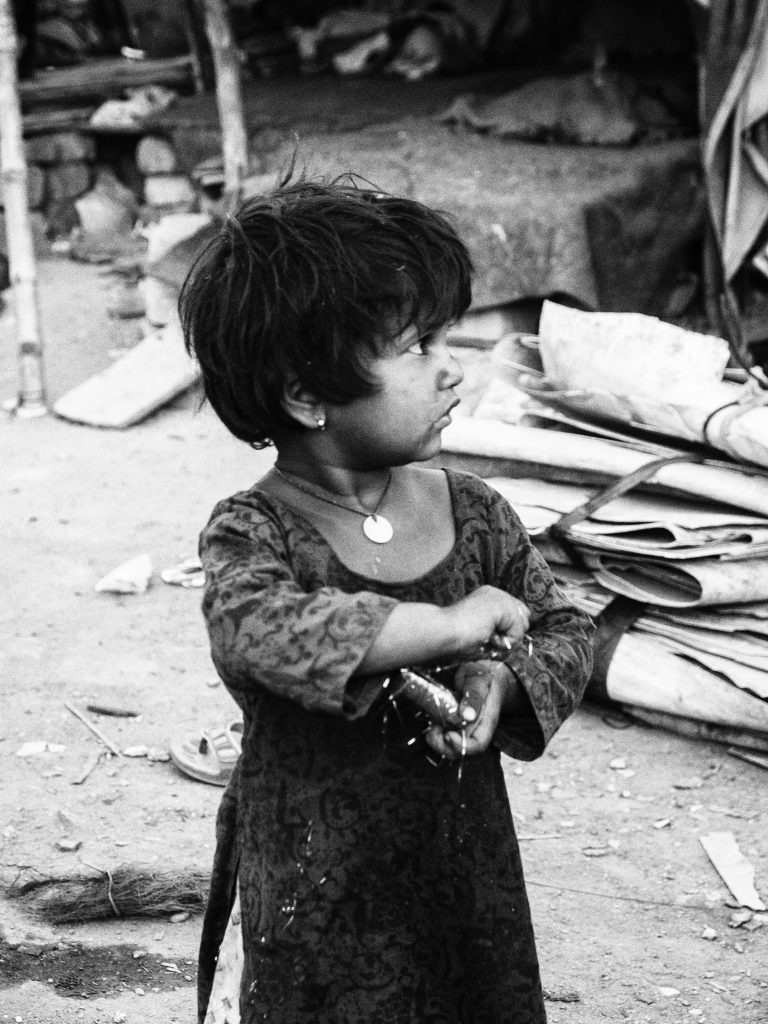
There was looming sense of gloom, dread and misery inside the dwellings and I did not have the heart to spend any more time there. I asked Imran how he thinks he could improve his lot. “If I can get some money to set up a small shop or buy a rickshaw I can make a better life,” he said. However, he was clearly a proud man and never asked me for any help.
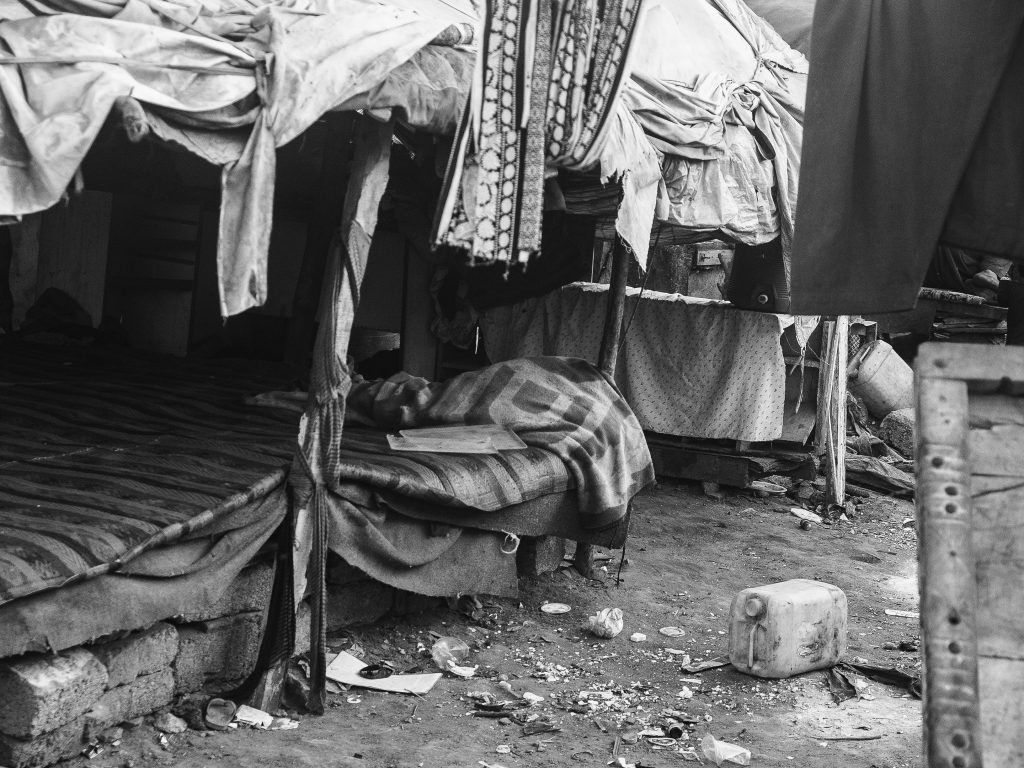
Clearly, Hijrat Colony is not an easy place to live in but what is striking is that the two halves are co-existing in peace and harmony – despite difference in the economic circumstances and ethnicity. The slum dwellers are from Punjab and the denizens of the better part are mostly from Khyber Pakhtunkhwa.
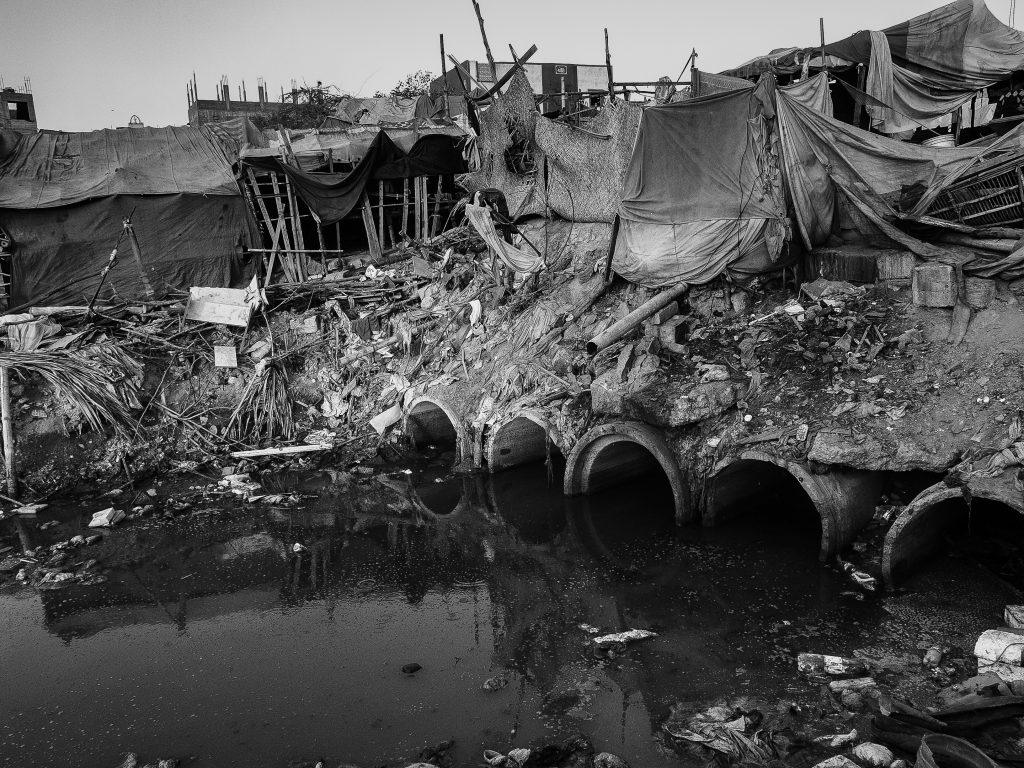
As I was leaving commotion broke out nearby. A rickshaw had stopped and the driver was slumped over the seat. He seemed either very sick or inebriated. A young woman was trying to drag him out. I could not take it anymore and walked away. I did not sleep well that night.
Photos by the author
The writer is an engineer by training and a social scientist by inclination.



